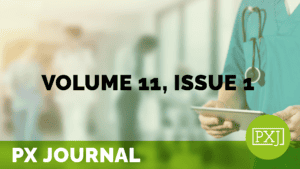Family’s sufferings from asymptomatic COVID: Clinicians’ perspective

Anticipating dire consequences, in 2020 the world braced itself for the unparalleled pandemic by resorting to unprecedented measures including stringent lockdowns, unforeseen social isolations, spotlight focus, resource diversions besides reorganized healthcare systems to name the quintessential few. Such unifocal convergence enhanced the vulnerabilities of patients dependent on non-COVID healthcare assistance. For a nation with a meagre allocation of 0.7 hospital beds per 1000 people and a lopsided doctor-population ratio of 1:1800, COVID-centric measures created unintended complications. Ironically, many succumbed in myriad ways, not due to the pandemic but due to the attributes of the survival measures. While such consequences cannot be reversed, we need to be able to draw learnings from all such experiences. Particularly, as healthcare advances into the 21st century and we evolve towards an individualized care model, the contrasting “blanket treatment approach,” while an understandable contingency measure for pandemic emergencies, warrants serious attention.
With this narrative, we would like to highlight the anguish and frustration faced by the parents and the doctors as multifarious elements complexly entangled to delay a crucial surgery in a two-year-old child with prolonged RT-PCR positivity. Knowing that mankind is likely to face such pandemics again, future responses require us to visualize the whole picture from a zoomed-out perspective to be able to roll out a synchronized holistic strategy. One needs to introspect on the mutilations incurred, to help redesign our disaster management responses, in order to address “all cause” damage and not just the pandemic ones.
Related content
-
 Patient Family & Community Engagement | Quality & Clinical Excellence
Patient Family & Community Engagement | Quality & Clinical ExcellenceWhat Healthcare Providers Need to Know About Newcomer Health Equity
2pm ET / 1pm CT / 12pm MT / 11am PT – Newcomers are a vital yet often misunderstood segment of the population that healthcare providers serve. This webinar explores the landscape of newcomer health equity in Canada and the United States, offering valuable insights into the challenges faced by this vulnerable group. Attendees will
Learn more -
 Patient Family & Community Engagement
Patient Family & Community EngagementA Passage of Advocacy and Listening: How My Name and Experiences Shaped My Purpose in Healthcare
By Typhany Morrison-Brooks I was born Madelyn Morrison without a middle name because my mother wanted me to have the space to choose one someday. I arrived a couple of months early, weighing just 4 pounds. They had already picked “Madelyn” for me, but as I lay in the incubator, I flipped myself over, earning
Learn more -
 Patient Family & Community Engagement
Patient Family & Community EngagementA Patient’s Journey: Navigating Life with Type 1 Diabetes
We are all patients. This article represents my views from my personal experience with type 1 diabetes for 25 years, in combination with my professional experience over the past 10 years as I have worked in patient support, health promotion and improving the patients’ experience. I aim to provide an outlook on the patient perspective,
Learn more
